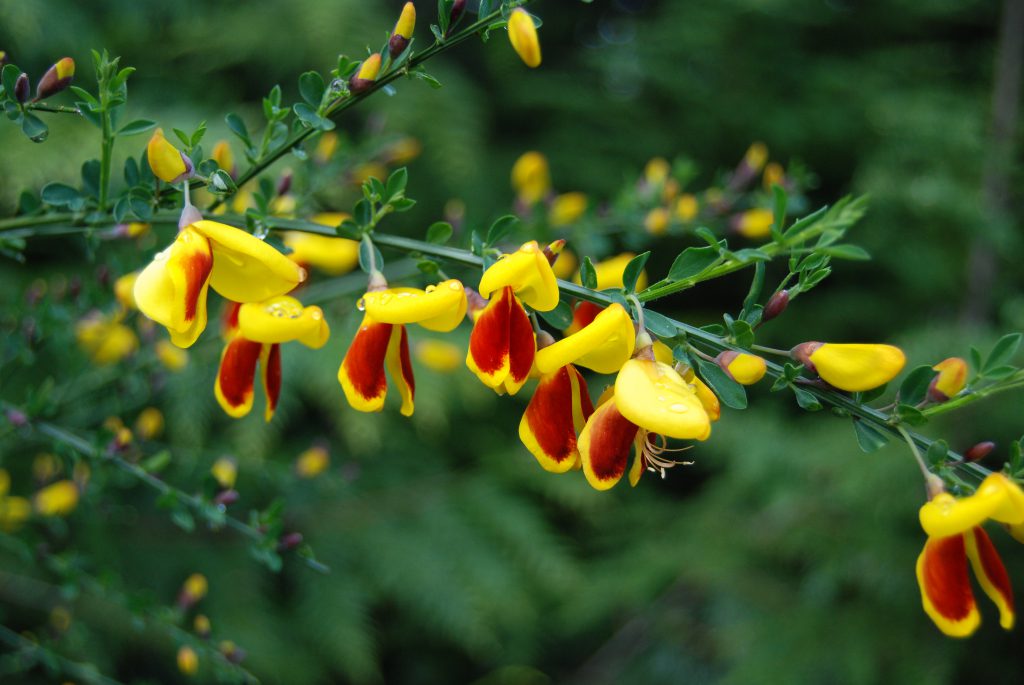Scientific name: Cytisus scoparius
What Is It?
Scotch broom (Cytisus scoparius) is an upright shrub in the pea family, with yellow flowers. It grows primarily in open, dry meadows and along roads. It is native to Europe.
Is It Here Yet?
Yes, Scotch broom has been documented in many parts of Washington.
Why Should I Care?
Scotch broom crowds out native species and harms wildlife habitat. It can form dense stands that degrade farmland and create fire hazards. These stands may prevent or slow forest regeneration and restoration of land and wetland buffers. Scotch broom produces toxic compounds, which in large amounts can poison animals such as horses.
How Can We Stop It?
To prevent spread, wash vehicles, boots, and animals that may have been in infested areas. Remove Scotch broom from your property where possible. Scotch broom is on Washington’s Terrestrial Noxious Weed Seed and Plant Quarantine list, meaning it is prohibited to transport, buy, sell, offer for sale, or distribute Scotch broom plants, plant parts, or seeds. Scotch broom is listed as a Class B noxious weed in Washington, meaning it is designated for control in certain state regions.
Visit our “Play, Clean, Go” and “Don’t Pack a Pest” to learn more about how to prevent the spread of invasive species.
What Are Its Characteristics?
- Scotch broom is an upright shrub that grows for multiple years. It can grow 3-12 feet tall. It has slender, sharply angled greenish brown branches.
- Its leaves have three, egg-shaped leaflets that are ½-1 inch long. Leaflets are dark green above and pale and hairy below.
- Flowers are bright yellow, 1 inch long, and typically bloom from March to June. Seed pods are flat and contain 5-8 bean-like seeds
How Do I Distinguish It From Native Species?
Scotch broom may be confused with Spanish broom (Spartium junceum), a Class A noxious weed, or gorse (Ulex europaeus), a Class B noxious weed.



